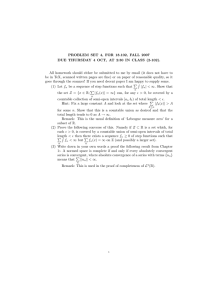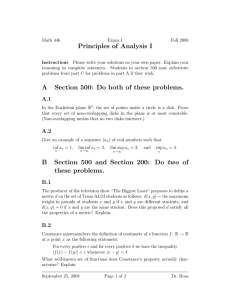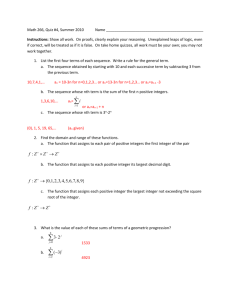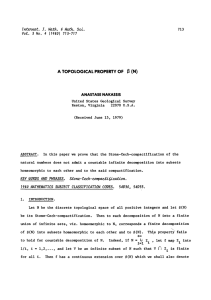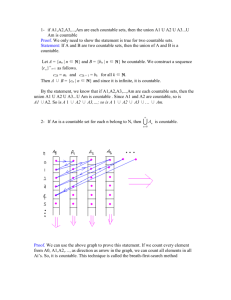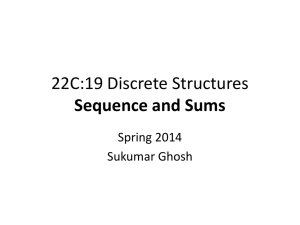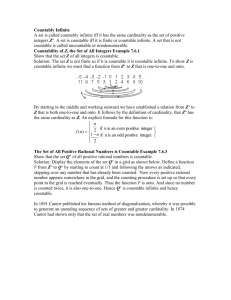solutions
advertisement
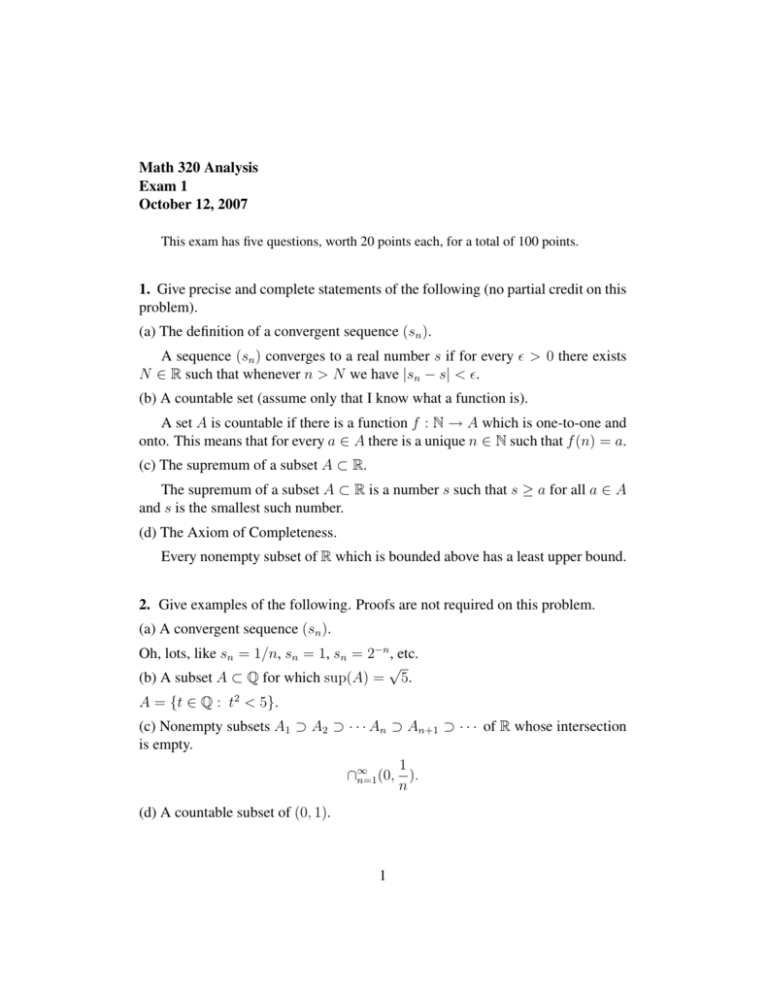
Math 320 Analysis
Exam 1
October 12, 2007
This exam has five questions, worth 20 points each, for a total of 100 points.
1. Give precise and complete statements of the following (no partial credit on this
problem).
(a) The definition of a convergent sequence (sn ).
A sequence (sn ) converges to a real number s if for every > 0 there exists
N ∈ R such that whenever n > N we have |sn − s| < .
(b) A countable set (assume only that I know what a function is).
A set A is countable if there is a function f : N → A which is one-to-one and
onto. This means that for every a ∈ A there is a unique n ∈ N such that f (n) = a.
(c) The supremum of a subset A ⊂ R.
The supremum of a subset A ⊂ R is a number s such that s ≥ a for all a ∈ A
and s is the smallest such number.
(d) The Axiom of Completeness.
Every nonempty subset of R which is bounded above has a least upper bound.
2. Give examples of the following. Proofs are not required on this problem.
(a) A convergent sequence (sn ).
Oh, lots, like sn = 1/n, sn = 1, sn = 2−n , etc.
√
(b) A subset A ⊂ Q for which sup(A) = 5.
A = {t ∈ Q : t2 < 5}.
(c) Nonempty subsets A1 ⊃ A2 ⊃ · · · An ⊃ An+1 ⊃ · · · of R whose intersection
is empty.
1
∩∞
n=1 (0, ).
n
(d) A countable subset of (0, 1).
1
Two examples:
{
1
: n ∈ N},
n+1
(0, 1) ∩ Q.
3. Let (sn ) be a convergent sequence of real numbers, and let c ∈ R. Prove that
lim(csn ) = c lim(sn ).
Proof: Let s = lim(sn ). If c = 0 then csn = 0 for all n, so lim(csn ) = 0 =
c lim(sn ). Assume c 6= 0. Let > 0. There is N ∈ R such that for all n > N we
have |sn − s| < /|c|. Then for all n > N we have
|csn − cs| = |c||sn − s| < |c|
= .
|c|
Hence (csn ) converges to cs. 4. Let S be the set of all sequences (sn ) where sn ∈ {0, 1} and only finitely many
of the sn are nonzero. Decide, with proof, whether S is countable or uncountable.
S is countable.
Proof: Let Sn be the set of sequences in S whose terms beyond the nth term are
all 0. Then Sn is finite, in fact |Sn | = 2n . Also, every sequence in S is contained
in some Sn . Therefore S is a countable union of finite sets, hence is countable. 5. Let T = {t ∈ R : t3 < 2}. Prove that sup T exists and is a cube root of 2.
Proof: If t ∈ T then t3 < 2 < 23 so t < 2. Hence T is bounded above. Hence
the number α = sup(T ) exists.
Suppose α3 < 2. For every n ∈ N, we have
3
1
3α2 3α
1
3α2 + 3α + 1
α+
= α3 +
+ 2 + 3 ≤ α3 +
.
n
n
n
n
n
If we choose n so that
3α2 + 3α + 1
< 2 − α3 ,
n
then we have
1
α+
n
3
2
< 2,
so α + n1 ∈ T , contradicting the fact that α is an upper bound for T .
Suppose α3 > 2. For every n, we have
1
α−
n
3
If we choose n so that
= α3 −
3α2 3α
1
3α2 + 1
+ 2 − 3 ≥ α3 −
.
n
n
n
n
3α2 + 1
< α3 − 2,
n
then we have
1
α−
n
3
> 2,
/ T , contradicting the fact that α is the least upper bound for T . Hence
so α − n1 ∈
3
α = 2. 3
